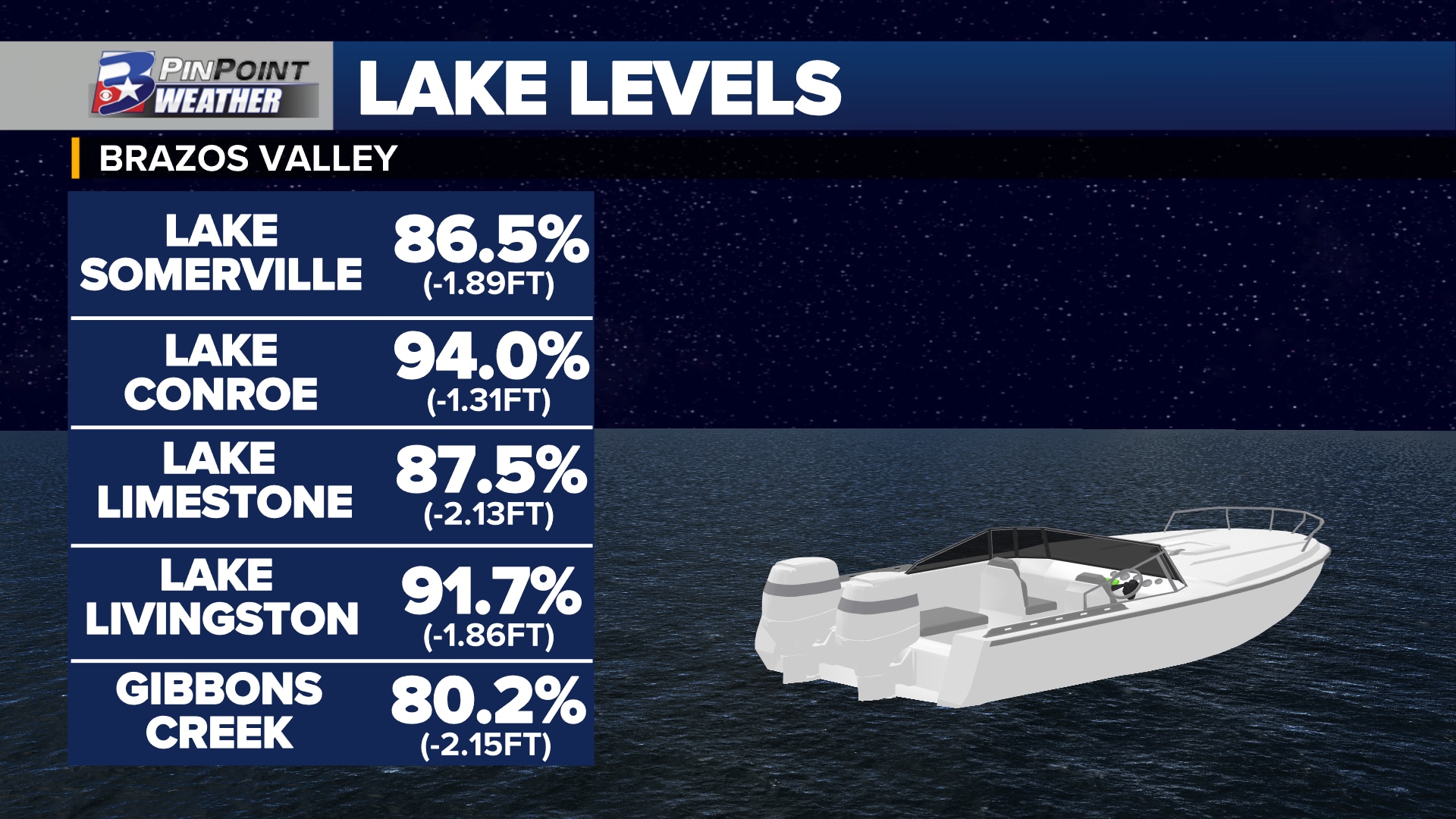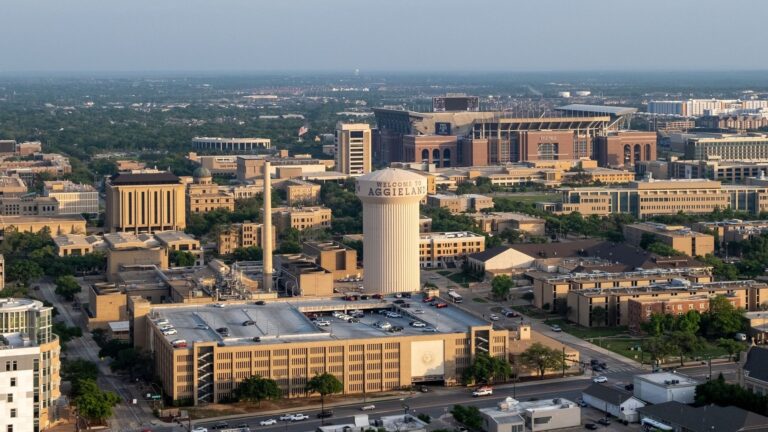Drought impacts water levels across Texas
BRYAN, Texas (KBTX) – It’s no secret that it has been a hot, dry summer across the Lone Star State, but what exactly are the consequences of this harsh weather?
Well, one of the more notable consequences is the impact on our water levels. In order to understand how Texas waters have been affected this summer, we need to first consider the meteorological sources they rely on. The most obvious: precipitation.
Rainfall accumulation over the past 2 weeks across the United States
The map above denotes observed precipitation across the United States from August 1st-14th. The glaring outlier here is almost the entire state of Texas. As far as rain is concerned across the Brazos Valley, we have not managed to see any measurable accumulation in over 30 days. High pressure continues to dominate our weather pattern, swirling moisture around its clockwise movement, leaving the Lone Star State hot and dry.
Another meteorological factor that should be considered when assessing water levels, is temperature. The summertime heat has been exceptional across the entire globe, in fact, we officially recorded the hottest July on Earth in 174 years. Here at home, as of August 13th, this summer is now the hottest on record in College Station, with an average temperature of 89.1°, beating out the infamous summers of 2011 and 2022.
This prolonged heat and drought has taken a toll on our lake levels, and this map below gives a good indication as to why. With major rivers such as the Colorado, Rio Grande, and Brazos running across the state with no source of rain, they are struggling to flow themselves in some areas, let alone act as a supply for our local lakes.
Drought Impact on Texas Surface Water as of August 8th, 2023.
The lakes of the Brazos Valley are in decent shape, with Lake Conroe at 94% capacity, Lake Limestone at 87.5%, and Lake Somerville at 86.5%.
However, the same cannot be said for areas like Austin, with Lake Travis currently at 40.4% capacity, sitting nearly 47 feet below the flood pool, and Lake Buchanan at 51.4% capacity. Other lakes show evidence of multi-year drought. Lake Medina outside of San Antonio, for example, currently sits at 4.5% capacity, more than 85 feet below normal. This is a growing concern as we continue to see record-breaking heatwaves and droughts becoming more prevalent each year.
Lake Travis
Austin, Texas
8/12/23 pic.twitter.com/GoI7NWkgY1
— Evil MoPac (@EvilMopacATX) August 12, 2023
As water levels in reservoirs across the state continue to fall, mandatory water restrictions have been put into place. Currently, College Station is on the verge of Stage 1 Water Restrictions, with city officials asking that we water our lawns no more than twice a week.
REMINDER: We’re on the verge of Stage 1 water restrictions! 💧
Please limit landscape irrigation to twice weekly, and don’t water between 10 a.m.-6 p.m. or anytime on Mondays.
Your cooperation helps us manage our water supply.
🔗 Learn more: https://t.co/1pFcfu9fic. pic.twitter.com/BCcmupIjw5
— College Station (@CityofCS) August 13, 2023
Even when we do manage to get the next good soaking rainfall, the extremely high vegetative demand for moisture will leave very little excess rain to flow into our rivers and lakes. So, here’s to hoping the fall and winter months will bring us some much-needed relief and rainfall to help restore our rivers and lakes.







